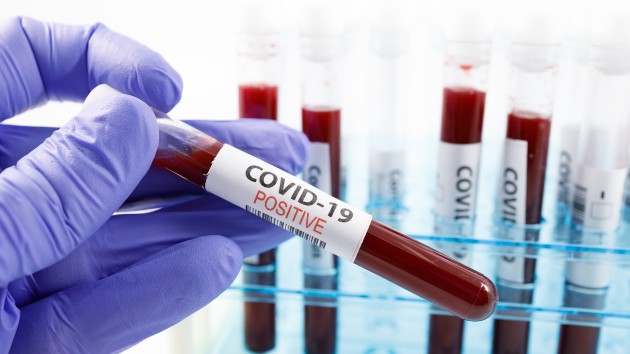
Ovidiu Dugulan/iStock
Ovidiu Dugulan/iStockBy WILLIAM MANSELL, ABC News
(NEW YORK) — A pandemic of the novel coronavirus has now killed more than 970,000 people worldwide.
Over 31.6 million people across the globe have been diagnosed with COVID-19, the disease caused by the new respiratory virus, according to data compiled by the Center for Systems Science and Engineering at Johns Hopkins University. The criteria for diagnosis — through clinical means or a lab test — has varied from country-to-country. Still, the actual numbers are believed to be much higher due to testing shortages, many unreported cases and suspicions that some national governments are hiding or downplaying the scope of their outbreaks.
Since the first cases were detected in China in December, the virus has rapidly spread to every continent except Antarctica.
The United States is the worst-affected country, with more than 6.8 million diagnosed cases and at least 200,814 deaths.
California has the most cases of any U.S. state, with more than 793,000 people diagnosed, according to Johns Hopkins data. California is followed by Texas and Florida, with over 741,000 cases and over 687,000 cases, respectively.
Nearly 170 vaccine candidates for COVID-19 are being tracked by the World Health Organization, at least six of which are in crucial phase three trials.
Here’s how the news is developing Wednesday. All times Eastern:
Sep 23, 6:54 am
Navajo Nation reinstates stay-at-home order
As COVID-19 cases rise, the Navajo Nation is re-issuing a strict stay-at-home order and a 57-hour weekend lockdown. The increase in cases is in the Sage Memorial Hospital service area in Arizona and in satellite chapters in the Eastern Navajo Agency.
Many of these new cases are a result of family gatherings and people traveling to areas outside of the Navajo Nation and returning with the virus, Navajo Nation President Jonathan Nez said in a statement.
“These new cluster cases are very troubling because we do not yet know the extent to which these individuals came into contact with people in the general public,” Nez said Tuesday.
The lockdown begins at 8 p.m. on Sept 25 and ends at 5 a.m. on Sept 28. There is also a daily curfew from 9 p.m. to 5 a.m. on weekdays.
The Navajo Nation previously implemented public health emergency orders that restricted in-person gatherings and traveling off the Nation.
“We have told our people repeatedly that there remains substantial risk if you choose to travel off the Nation and hold family gatherings. Cities and towns near the Navajo Nation continue to see large increases in daily COVID-19 cases. It only takes a few positive cases to lead to another surge and we all know that our health care system cannot handle another large surge,” Nez said.
As of Sept. 22, there have been more than 10,000 COVID-19 cases in the Navajo Nation, with at least 548 deaths.
Sep 23, 5:10 am
Six New York City neighborhoods see increase in cases
In the city that was hit hardest by the coronavirus pandemic, cases of COVID-19 are on the rise in six New York City neighborhoods, according to local health officials.
Due to an uptick in the Borough Park, Kew Gardens, Midwood, Edgemere-Far Rockaway, Flatbush, Bensonhurst and Williamsburg communities, the city announced a targeted response to slow the spread in these areas as part of its “Get Test Tuesday” initiative.
The Midwood, Borough Park and Bensonhurst neighborhoods saw a 4.71% increase in COVID-19 cases from the week ending Aug. 1 to the week ending Sept. 19. In that same period, Far Rockaway saw a 3.69% increase, Kew Gardens a 2.24% increase and Williamsburg a 2% increase.
The increases in these areas make up 20% of all cases citywide.
“At this point in time, these increases could potentially evolve into more widespread community transmission and spread to other neighborhoods unless action is taken,” the city said in a statement.
To help combat the rising cases in these areas, Dave Chokshi, commissioner of health of the City of New York, said the city would increase its presence, communication and add testing in these neighborhoods.
“… we’ll launch robocalls and WhatsApp messages, communications with houses of worship, core-four palm cards to businesses, distribution of masks, gloves, and hand sanitizer. We’ll place additional ads in community newspapers and we’ll offer new point-of-care testing resources in these six neighborhoods at both Urgent Care and community provider offices,” Chokshi said at a press conference Tuesday. “We aim to be seen and heard, so sound trucks will broadcast core four messages in these neighborhoods as well.”
Since the beginning of the pandemic, New York City has had more than 23,000 coronavirus-related deaths and 236,000 cases.
Mayor Bill de Blasio said with these upticks, combined with cooler weather, it’s important for New Yorkers to continue to avoid large indoor gatherings.
“There are clear rules from the state on this,” de Blasio said at a press conference Tuesday. “Large gatherings are still a problem both legally and in terms of the health problem they create. So, we need people to avoid that.”
Copyright © 2020, ABC Audio. All rights reserved.